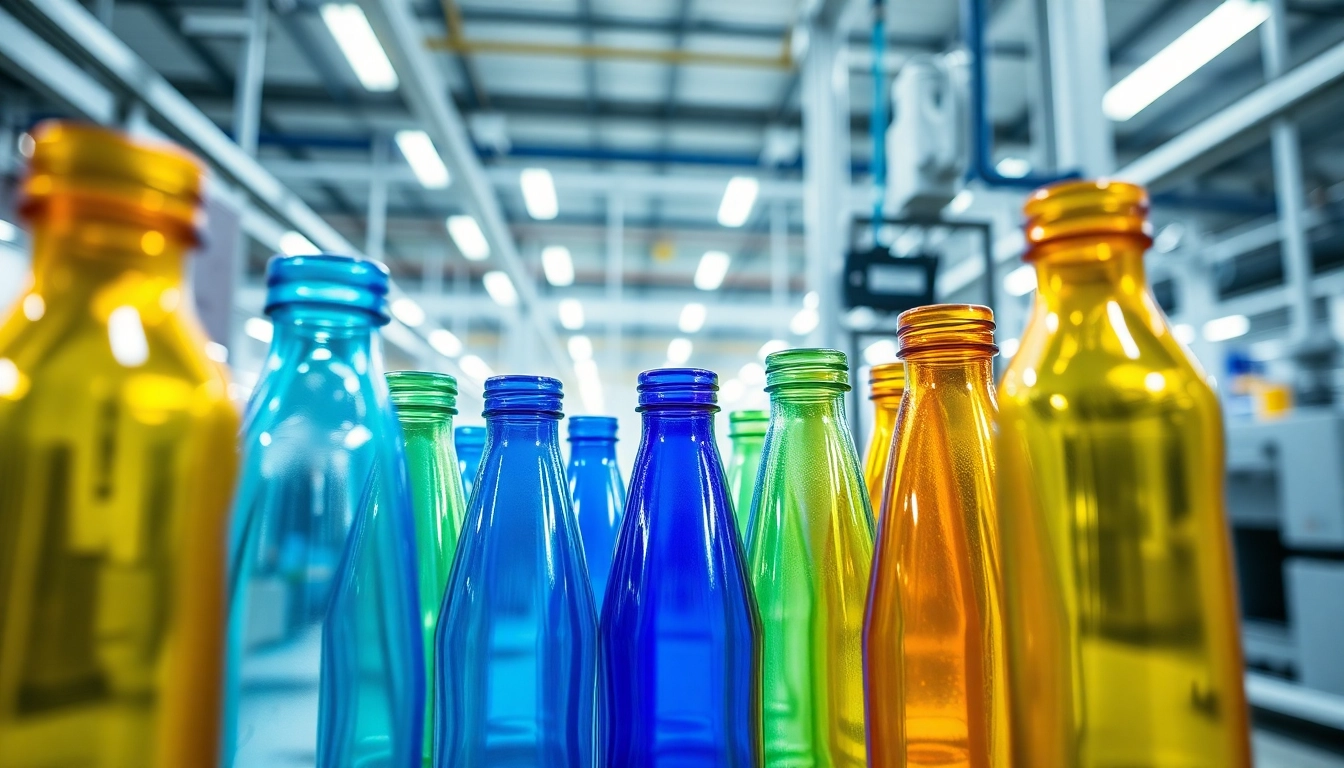Introduction to PET Şişe and Its Market Significance
Polymers such as PET (Polyethylene Terephthalate) have revolutionized the packaging industry, with PET şişe (PET bottles) emerging as one of the most ubiquitous and essential forms of plastic containers worldwide. Their lightweight, durability, and clarity make them ideal for storing a wide array of products, including water, beverages, and food items. The robust global demand for PET şişe has driven technological advancements and expanded manufacturing capacities, cementing its position as a staple in both consumer markets and industrial sectors.
Today, PET şişe are recognized not only for their functional utility but also for their impact on sustainability initiatives. As consumer awareness about environmental issues grows, the industry faces increasing pressure to innovate and adopt eco-friendly practices. This scenario emphasizes the importance of understanding the entire lifecycle of PET şişe—from raw material sourcing and production standards to sustainability and recycling strategies.
For businesses and entrepreneurs involved in packaging solutions, sourcing high-quality PET şişe is crucial. To explore comprehensive options and reliable supplier partnerships, visit pet şişe solutions that adhere to the latest industry standards.
Manufacturing and Quality Standards for PET Şişe
Materials and Production Processes
The manufacturing of PET şişe involves sophisticated processes designed to meet stringent quality and safety standards. The primary raw material, PET resin, undergoes polymerization—a process where ethylene glycol and terephthalic acid react to form polyethylene terephthalate. This resin is then melted and extruded into preforms or pre-shaped blanks, which are later blow-molded into final bottle forms.
Advanced injection molding machines precisely control temperature, pressure, and cooling to ensure uniformity and avoid defects. Modern manufacturing plants incorporate cutting-edge technology such as stretch blow molding, which enhances the mechanical strength and clarity of the final PET şişe. Additionally, pigmentation and branding can be integrated during production to meet specific branding needs.
Quality Control and Certification Requirements
To ensure safety and compliance, PET şişe producers must adhere to international and local regulations. Quality control measures include rigorous testing for factors such as:
- Mechanical strength and impact resistance
- Barrier properties to prevent oxygen and moisture transmission
- Chemical safety, including absence of harmful contaminants or residual monomers
- Clarity and color consistency
- Dimensional accuracy and thread compatibility for caps
Certifications like ISO 9001 (Quality Management), ISO 14001 (Environmental Management), and compliance with food safety standards such as FDA or EFSA guidelines are critical indicators of a reliable manufacturer. These certifications demonstrate adherence to best practices in quality assurance and environmental sustainability.
Innovations in PET Şişe Design and Sustainability
Industry leaders continuously innovate to address environmental challenges. Recent developments include lightweight PET şişe that reduce plastic usage without compromising strength, and designs that facilitate easier recycling. Additionally, some companies are exploring bio-based PET resins derived from renewable feedstocks, aiming to lower carbon footprints.
Closely tied to design innovation is the adoption of brand-enhancing aesthetics, such as ergonomic shapes, transparent finishes, and tamper-proof features, which improve consumer experience and safety.
Choosing the Right PET Şişe Supplier and Manufacturer
Key Factors for Selecting a Reliable PET Şişe Producer
When sourcing PET şişe for commercial use, several critical factors determine supplier reliability:
- Production Capacity: Ensure the supplier can meet your volume demands consistently.
- Quality Certifications: Look for ISO, food safety, and environmental compliance labels.
- Customization Capabilities: Ability to produce specific shapes, sizes, and branding features.
- Lead Times and Logistics: Efficient delivery processes to keep production on schedule.
- Cost Competitiveness: Competitive pricing aligned with quality standards.
How to Assess Production Capabilities and Certification
A thorough evaluation involves visiting manufacturing facilities, requesting sample batches, and verifying certification documents. Communication is vital—maintain regular dialogue to clarify production processes and quality expectations. Leveraging testimonials and references from existing clients can provide insights into the supplier’s reliability and customer service.
Implementing quality assurance protocols, such as incoming material inspections and batch testing, helps mitigate risks.
Partnership Strategies for Long-term Supplier Relationships
Building enduring partnerships with PET şişe manufacturers entails transparent communication, volume commitments, and collaborative innovation. Long-term relationships can lead to preferential pricing, priority order fulfillment, and shared R&D initiatives for eco-friendly solutions.
Regular audits and performance reviews ensure mutual alignment with quality, sustainability, and delivery benchmarks.
Environmental Impact and Recycling of PET Şişe
Recycling Processes and Geri Dönüşüm Kodları of PET
PET şişe are highly recyclable, representing a significant portion of plastic waste recovered globally. The recycling process involves collection, sorting, cleaning, shredding into flakes, and remelting into pellets for reuse. This closed-loop system reduces raw material consumption and environmental impact.
The recycling code “1” within a triangular symbol on PET bottles signifies their compatibility with recycling programs. Proper disposal and participation in recycling initiatives are vital for sustainability.
Eco-friendly PET Şişe Alternatives
Industry research explores alternatives such as biodegradable plastics, bio-PET made from renewable resources, and glass or aluminum containers emphasizing reusability. These options aim to minimize ecological footprints while fulfilling consumer demand for safety and convenience.
Regulations and Industry Standards for Sustainability
Governments and industry bodies enforce regulations to promote responsible manufacturing and recycling. Initiatives include bans on single-use plastics, incentives for using recycled materials, and mandatory labeling. Companies investing in sustainable practices often gain competitive advantages through eco-labeling and consumer trust.
Cost Analysis and Market Pricing of PET Şişe
Factors Influencing Pet Sise Pricing
Pricing of PET şişe is influenced by raw material costs (primarily PET resin), energy prices, manufacturing efficiency, and labor costs. Market demand fluctuations, technological upgrades, and regulatory changes can also impact prices. Bulk purchasing and long-term contracts often secure better rates, ensuring cost stability.
Market Trends and Price Fluctuations
Recent trends indicate a gradual decrease in PET resin prices due to advances in recycling technology and increased adoption of sustainable feedstocks. However, unforeseen disruptions such as geopolitical tensions or raw material shortages can cause temporary price spikes.
Monitoring these trends enables companies to optimize procurement strategies and inventory management.
Optimizing Cost without Compromising Quality
Achieving cost efficiency involves selecting reputable suppliers who provide high-quality products, negotiating volume discounts, and integrating design innovations that reduce material usage. Investing in recycling infrastructure can also lower raw material costs while adhering to sustainability goals.



